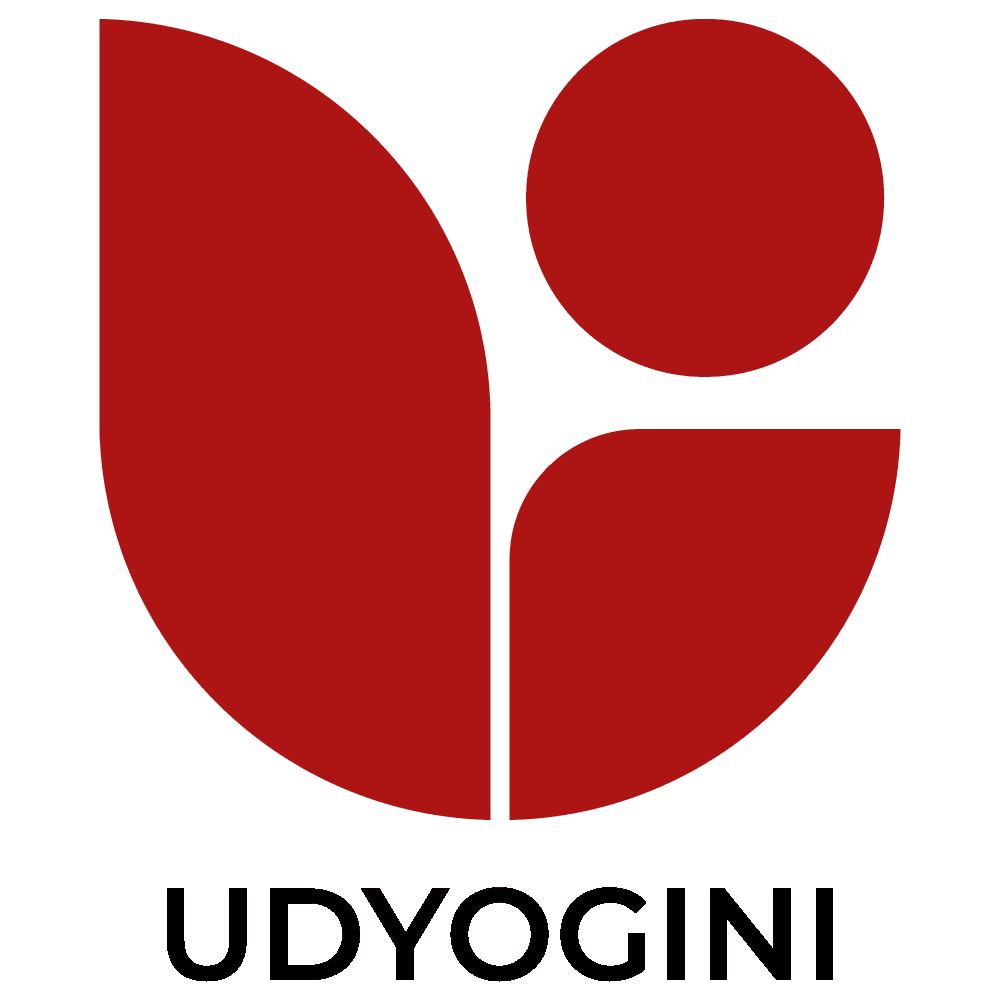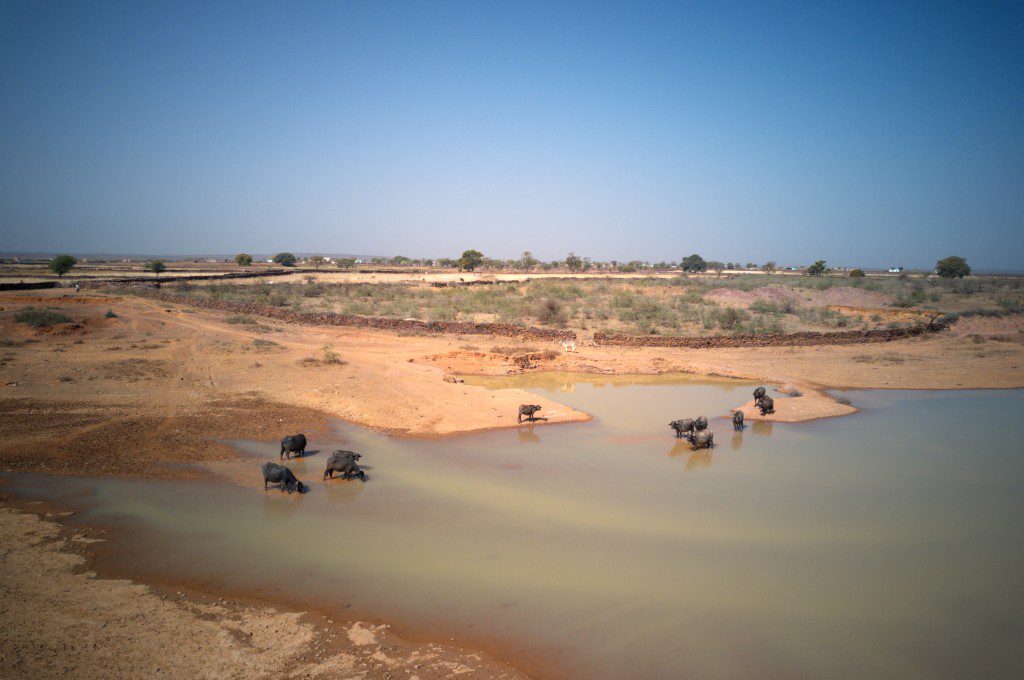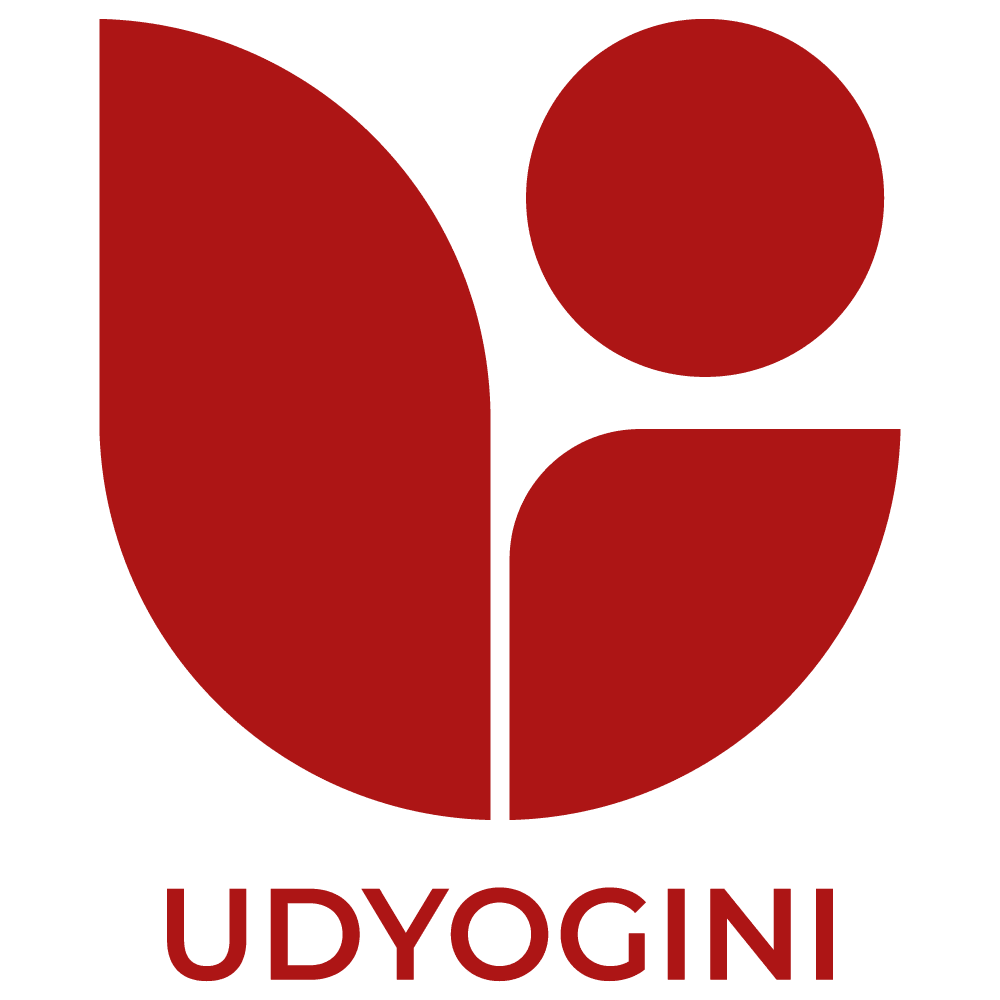Udyogini’s successful attempt to resolve the problem of water scarcity through executing the ancient but ‘dying wisdom’ of collecting water where it falls’ at appropriate sites in the project villages, keeping in mind the watershed management principle,
The time period covered by the case: 2019 – 2020
Location: Karauli District, Rajasthan
How it was:
Rajasthan is one of the states facing the most significant water scarcity in the country. About 11% of India’s livestock and 10% of the land under cultivation are in Rajasthan. Still, it only has 1% of the country’s water resources. Livestock is the dominant source of livelihood, followed by agriculture; however, it was challenged by the lack of water in the hilly areas of Karauli. Villagers were forced to migrate along with livestock during the summer. Sometimes, they had to splash mud in the ponds to get the water for drinking as all water sources dried up in the summer. Agricultural lands are undiluted by nature, so they have a low water-holding capacity. Ponds silted up years ago are the only water source for agriculture and cattle rearing. Villages in the Daang area are disadvantaged due to their remoteness. They are further distressed as their land conflicts with forest land. Since these villages are entirely rain-fed and surface water is the only water source, they can cultivate barely beyond subsistence. With no such basic amenities as roads for transport and commute, electricity, scarce water, and an unstable source of income, the hardship of the villagers was unimaginable. Developing water resources was the most pressing issue and the community’s immediate need, resulting in the proposed intervention.
What did we do?
The intervention proposed the reconstruction of community ponds, where the ponds were desilted, permanent boundaries were made, and their heights were raised using the same desilted mud. The community pond of Daulatpura was extended to 12 feet, and the border of the shared community pond of Rawatpura and Beherda was increased to 14 feet, along with nine newly built or reconstructed private ponds. The unique characteristic of the intervention was that the whole idea, planning, and implementation were done in a participatory manner, where village-level committees, called Village Development Committees (VDCs), were always the frontrunners of the project. The VDC members actively participated in all tasks, from selecting beneficiaries, vendors, and decisions about procurement and wage rates to collecting contributions from the villages and maintaining the structures. An end-to-end involvement of VDCs is successful in implementing the intervention. Udyogini provided support and held the hands of the VDC members in the planning, implementation, and monitoring of the project. The role of the community as the drivers of the movement, collecting the community’s monetary contribution, taking full responsibility for the maintenance of these water structures, as well as ensuring proper monitoring in the future, was the highlight and a significant achievement of the intervention as it provided ownership and sustainability in the long run.
In the Dang area, on average, 1-2 members of the family lost their jobs due to the COVID-19 crisis; they have returned and continue to face issues of unemployment. And a novel aspect of the intervention was that the people of the villages were provided with labour for the construction and making of the community ponds. We generated about 2,600 labour days involving 450 community members from six villages. A labourer received INR 250 daily, and Mason received INR 500.
What changes did we bring about?
The villagers are now expecting a higher yield in this cycle of Rabi crops, where some have sown wheat for the first time.
Farmers with fewer land holdings were able to irrigate their lands 3–4 times and thus are expecting a healthier crop yield. Farmers who owned larger pieces of land could irrigate ten large tracts of land adequately. There was an increase in the variety of crops as well, and they could only grow bajra, mustard, and occasionally wheat or rice; this time, they have sown 40 to 80 quintals of wheat.
Due to the construction of their ponds, water availability has increased in the community ponds, and the travel time to fetch water has been reduced from 2 hours to 15-20 minutes in certain areas.
The cattle receive adequate amounts of water. Due to this, they are also expecting an increase in income through livestock rearing.
This also led to an increase in the water level of the wells in the villages where the ponds were reconstructed, and water in the wells is now available throughout this year.
The intervention attempted to address the vital need for water for the community members through a comprehensive, integrated, participatory, and scientific approach, which is expected to bring more positive changes in the upcoming years in the lives of community members through water availability for agriculture, cattle rearing, and other basic needs.



